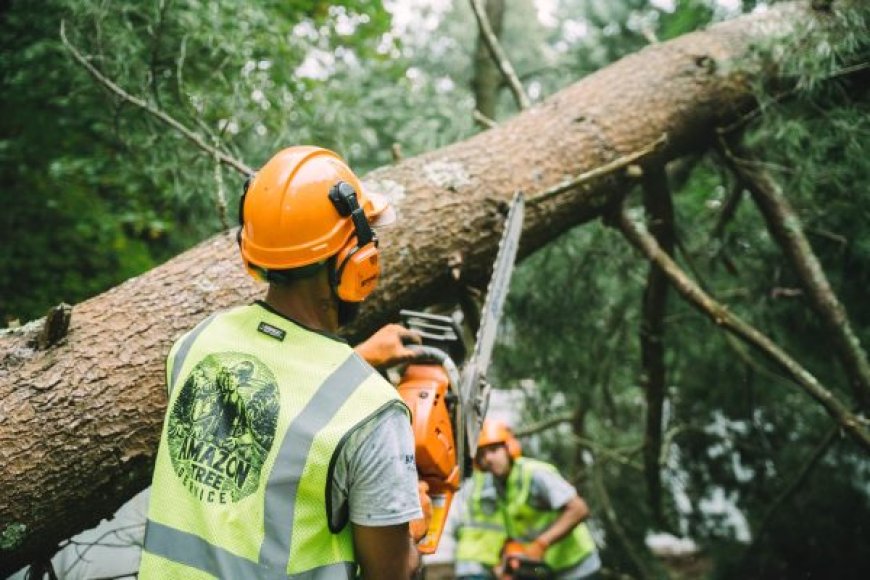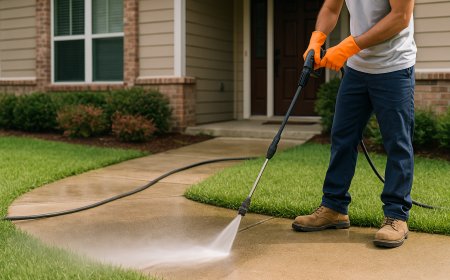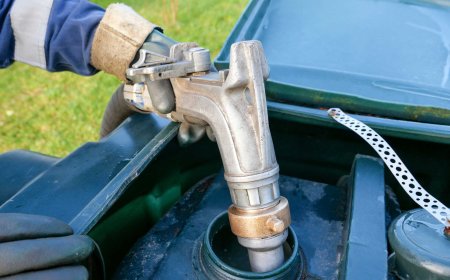Tree Service: Complete Guide to Caring for Your Trees
Trees are a long-term investment, and keeping them healthy requires more than just watering now and then. Professional tree services ensure your green giants stay strong, safe, and beautiful for years to come.

Trees are more than just beautiful additions to your yard theyre living investments that boost property value, improve air quality, and provide shade and comfort. But like anything valuable, they need regular care. Thats where tree services come in. From planting and pruning to emergency removal and stump grinding, professional tree services ensure your trees stay healthy, safe, and stunning year-round.
Lets break down everything you need to know about tree services what they include, why they matter, and how to choose the right provider.
What is Tree Service?
Tree service refers to a range of professional services designed to maintain, improve, and manage the health, structure, and appearance of trees. It includes both routine care and emergency responses for trees in residential, commercial, and public settings.
Why Tree Services Are Important
-
Keeps trees healthy and disease-free
-
Enhances safety by removing weak branches or hazardous trees
-
Improves curb appeal and property value
-
Ensures compliance with local regulations and safety codes
-
Prevents costly damage from falling trees or limbs
Common Types of Tree Services
1. Tree Pruning & Trimming
Removes dead, damaged, or overgrown branches to encourage growth and shape the tree properly.
2. Tree Removal
Safely cuts down dead, dying, or dangerous trees that pose a risk to property or people.
3. Stump Grinding
Removes leftover tree stumps below ground level to prevent pests, regrowth, and improve appearance.
4. Emergency Tree Services
24/7 response to trees downed by storms or other hazards threatening safety or access.
5. Tree Planting & Transplanting
Helps choose the right trees for your soil and climate and ensures proper planting techniques.
6. Disease Diagnosis & Treatment
Identifies pests, fungi, and diseases, then provides solutions to restore tree health.
7. Cabling & Bracing
Adds structural support to weak or heavy branches to reduce the risk of breakage.
Signs You Need Professional Tree Services
-
Dead or broken limbs
-
Trees leaning or with exposed roots
-
Excessive leaf loss or discoloration
-
Cracks in trunk or major branches
-
Branches touching power lines or buildings
-
Visible fungi, pests, or rot
When to Schedule Tree Services
-
Late winter to early spring: Ideal for pruning most trees before new growth
-
After major storms: Check for damage or hazardous branches
-
Fall: Prepare trees for winter weather
-
Anytime there's visible damage or decline
Tree Services for Residential Properties
Homeowners benefit from:
-
Routine tree health inspections
-
Seasonal pruning for safety and appearance
-
Tree removal and stump grinding
-
Landscaping advice and tree planting
Tree Services for Commercial Properties
Businesses, HOAs, and municipalities need:
-
Ongoing tree maintenance contracts
-
Hazard assessments and liability prevention
-
Emergency storm cleanup
-
Tree preservation during construction
What Does Tree Service Cost?
Prices vary based on size, complexity, and location.
| Service Type | Average Cost (USD) |
|---|---|
| Tree Pruning | $200 $800 |
| Tree Removal | $400 $2,000+ |
| Stump Grinding | $100 $400 per stump |
| Emergency Service | $800 $3,500+ |
| Planting/Transplanting | $150 $500+ per tree |
Tip: Get multiple quotes and ensure the company is insured and certified.
DIY Tree Care vs. Hiring Professionals
| Aspect | DIY | Professional Tree Service |
|---|---|---|
| Cost | Lower upfront | Higher upfront, but safer & expert |
| Risk | High (especially with big trees) | Low trained crews and equipment |
| Tools Needed | Chainsaw, pruners, ladders | Specialized gear and safety equipment |
| Expertise | Limited | Certified arborists know tree health |
What is a Certified Arborist?
An ISA Certified Arborist is a trained professional in the art and science of planting, caring for, and maintaining trees. Hiring one ensures your trees get top-quality care based on industry standards.
How to Choose the Right Tree Service Company
-
Check for licensing and insurance
-
Look for certified arborists on staff
-
Read reviews and ask for references
-
Request a detailed written estimate
-
Ask about safety protocols and equipment
Green Tree Services: Eco-Friendly Options
Many modern companies now offer sustainable solutions:
-
Mulching trimmed branches
-
Organic pest control
-
Recommending native, drought-tolerant trees
-
Tree preservation vs. removal when possible
How Regular Tree Care Saves Money
Ignoring your trees can lead to:
-
Property damage from falling limbs
-
Costly emergency removals
-
Declining tree health requiring expensive treatment
-
Legal liability if trees hurt someone or damage a neighbors property
Routine tree care prevents these problems, protecting both your wallet and your trees.
Conclusion
Trees are a long-term investment, and keeping them healthy requires more than just watering now and then. Professional tree services ensure your green giants stay strong, safe, and beautiful for years to come. Whether you need a routine trim or emergency removal, hiring trained experts is always the smart move.
So, next time your tree needs attention, dont grab a saw grab your phone and call the pros.
FAQs
1. How often should I have my trees pruned?
Every 23 years for mature trees, and annually for young or fruit-bearing ones.
2. Whats the difference between trimming and pruning?
Trimming is for appearance; pruning is for health and structure.
3. Can I remove a tree without a permit?
It depends on your local regulations. Some areas require permits for protected species or large trees.
4. Do tree services work in winter?
Yes, winter is often the best time for pruning when trees are dormant.
5. What happens to the tree after removal?
Most services offer options to chip, haul away, or leave the wood as firewood or mulch.













































